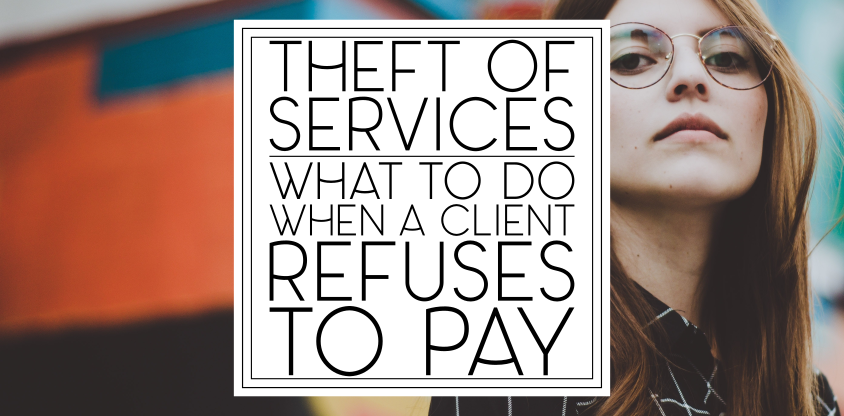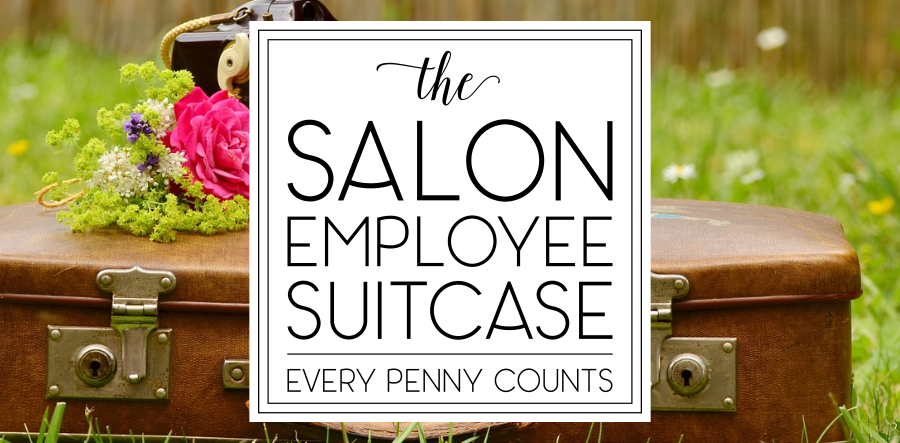It seems like every week this month, we’ve heard a new story of a salon owner who has gone to extremes to get what they’re owed from a client who refused to pay for their services. In this article, you’ll learn how to prevent theft in the first place and how to handle a client who rejects the bill.
Audio Version
In most jurisdictions, walking out of the salon without paying the bill constitutes theft of services (or larceny) but most states also recognize “reasonable rejection,” so a customer may be able to refuse to pay because the services provided weren’t as advertised or didn’t meet “reasonable standards of quality.”
Do you see the problem here? Unlike in retail businesses, where thievery has a black and white definition, those who would steal services are able to determine whether their crime was justified based on their own subjective (and heavily biased) opinion of the stolen services.
Those who stand to benefit from false claims of reasonable rejection should not be the singular authority on the topic of service quality.
It falls to us (the beauty professionals and salon owners) to protect ourselves with refund policies, consultation documentation, and clear service descriptions–and to take that power from the customers completely by requiring payment up-front.
Preventing Theft
Write a refund policy. Your refund policy should state that all service sales are final and that payment must be rendered and that theft of services will be prosecuted. Instruct clients to contact management with any complaints.
Ensure your service descriptions are clear and accurate. Don’t oversell your services. Keep client expectations reasonable, otherwise you may find yourself accused of false advertising. When your service protocols change, update the service descriptions immediately.
Utilize consultation forms, perform strand tests, and refuse to perform services with questionable outcomes. Your consultation forms should describe what results the client can expect from the service and all potential risks or complications. If the client requests a chemical service, performing a strand test and a patch test will be necessary. Should the client request a service that may end poorly, refuse the request and refer them to someone willing to put their professional reputation on the line.
Invest in security cameras. Thankfully, security cameras no longer cost an arm and a leg. Affordable systems proliferate the market. Mount a small sign and place the cameras in conspicuous areas so customers understand that they’re being recorded (and thus at risk of becoming the next viral sensation if they decide to act a fool in your business).
Take identifying information at the desk. Stop allowing strangers to walk into your treatment areas. Get names and phone numbers, at the very least.
Require payment up-front, particularly for more expensive and time-consuming services.
By failing to safeguard your business, you create an environment that enables theft. Don’t make it easy for them.
Handling Service Theft
First, let’s not commit any crimes ourselves in our pursuit of justice. We aren’t the police, so let’s not act like we are.
To clarify, that means we do not:
- Lock clients in the salon or try to keep them from leaving the building. (Unlawful or false imprisonment.)
- Lay hands on the clients. (Assault.)
- Chase the client out of the salon. (Chasing may be considered unreasonable force, harassment, and intimidation, but really, you’re just setting the client up to commit battery against you with what will likely be considered a valid self-defense claim.)
It should go without saying, but we definitely do not jump into or on top of the client’s vehicle (ever).
I don’t want to see any of you on the news.
In this scenario, we’re assuming the client doesn’t have a legitimate grievance with the service or the outcome, but wants to walk away from the salon without paying the bill, so what follows says nothing of compromise or customer service. We’re dealing with intentional and likely premeditated thievery in this article–so keep your commentary about seeking mutually satisfactory resolutions to yourself. Clients who intend to steal services aren’t interested in seeking resolutions.
Stop and think like a rational adult. Don’t get caught up in the moment. Be pragmatic and consider all possible outcomes before you do something stupid. Keep things in perspective. Ever hear about the woman who returned to the salon to shoot her barber after a bad haircut? Don’t make assumptions about what a client may or may not be capable of. Be considerate of the fact that there are other people in the building.
Stay calm. Don’t escalate the situation. Keep your voice–and your cell phone–down. Don’t be tempted to record a client with your phone or take pictures and discourage anyone who does. Some people react poorly when being recorded by some obnoxious person with a cell phone. (Your salon should already be under surveillance, remember?)
Reiterate the salon’s policy. Go through the motions and check this box off. A thief won’t care about the policy and won’t be moved to change their behavior on account of it. Don’t get hung up on it. Say it once (including that part about prosecution) then move to the next step.
Arrange to discuss the dispute at a later time. Get the client out of the salon. Don’t let them create a bigger scene than they already have. Inform them that the owner will call them to discuss their experience later. Use those exact words–“to discuss your experience.” Not, “to arrange payment,” or “to reach a compromise.”
Contact the client to deliver a final warning and to arrange for payment. The owner should make this call. Let the client know that payment needs to be made. If the client continues to refuse, communicate that if they do not pay by the conclusion of the call, you will be filing a report with the police.
Report the theft. Call the police and let them handle it. Stop engaging with the client. Don’t call them or answer their calls. Don’t allow them to return to the salon for services. Don’t respond to anything they do or say online. Let them leave their negative reviews and send their nasty messages–screenshot everything and forward them to the officer responsible for handing your complaint.
Now, get over it and move on.
You’ve done all you can do. Sometimes you’ll win and get your money back, but not always. Don’t let your thirst for vengeance consume you or influence your behavior. After you report the theft, cooperate with the police and get back to focusing on your salon.
Have you ever had a client refuse to pay for their services? How did you handle it? Tell us about it in the comments! (Comments are moderated and replied to each Monday.)









3 Responses
Great write up!! A must read for all business owners, especially in Miami.
Basically there’s nothing we can do as a professional. Just take the hit. It is my understanding from this article. In the beginning this article says “write a refund policy” than it says later on ” a thief won’t care about your policies anyways”. The only useful advice from this article is to have the client pay upfront for any expensive services. SMH.
There are things you can do. Prevention through pre-payment, unfortunately, happens to be most effective. While a thief won’t care about your policies, they strengthen your claim against chargebacks and service theft when you’re working with credit card companies and police. (I successfully defend one or two chargebacks a year thanks to my policy.)
So yeah, the policy is necessary, even if it won’t be respected by a client determined to steal services. Sorry I couldn’t give you more “useful” information. 🙄